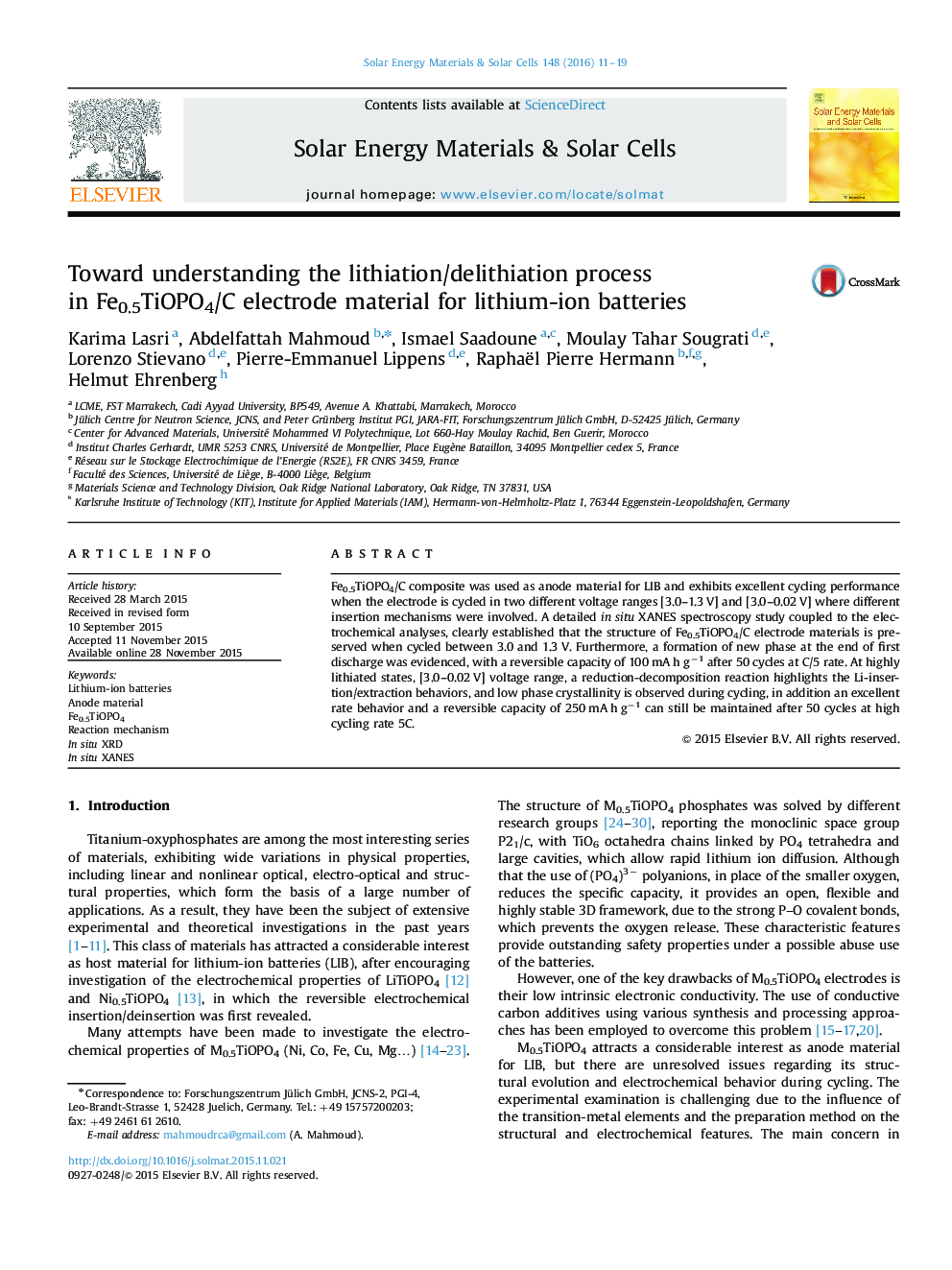| Article ID | Journal | Published Year | Pages | File Type |
|---|---|---|---|---|
| 77623 | Solar Energy Materials and Solar Cells | 2016 | 9 Pages |
•Fe0.5TiOPO4 anode material is obtained by a sol–gel method directly from H3PO4 acid.•A reversible capacity of 250 mAh/g is reached after 50 cycles at 5C rate.•The lithiation process in the Fe0.5TiOPO4 material occurs in three potential regions.•In-situ XRD clearly shows Fe metal extrusion and amorphization of the studied phosphate.
Fe0.5TiOPO4/C composite was used as anode material for LIB and exhibits excellent cycling performance when the electrode is cycled in two different voltage ranges [3.0–1.3 V] and [3.0–0.02 V] where different insertion mechanisms were involved. A detailed in situ XANES spectroscopy study coupled to the electrochemical analyses, clearly established that the structure of Fe0.5TiOPO4/C electrode materials is preserved when cycled between 3.0 and 1.3 V. Furthermore, a formation of new phase at the end of first discharge was evidenced, with a reversible capacity of 100 mA h g−1 after 50 cycles at C/5 rate. At highly lithiated states, [3.0–0.02 V] voltage range, a reduction-decomposition reaction highlights the Li-insertion/extraction behaviors, and low phase crystallinity is observed during cycling, in addition an excellent rate behavior and a reversible capacity of 250 mA h g−1 can still be maintained after 50 cycles at high cycling rate 5C.
